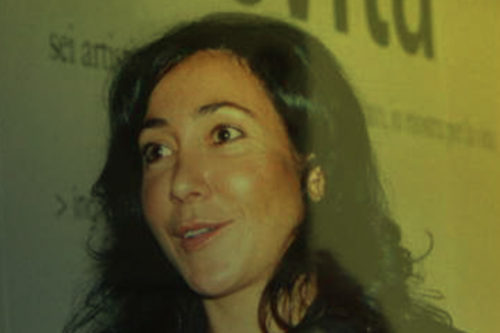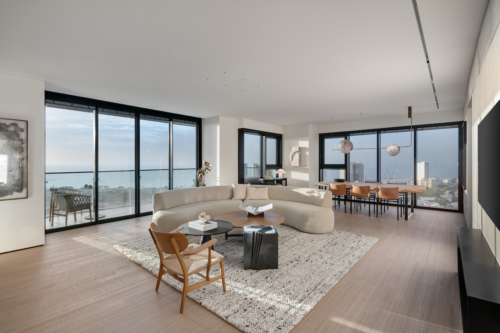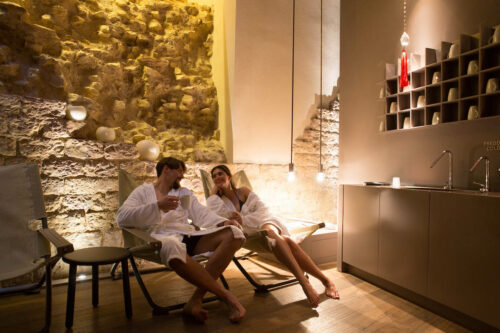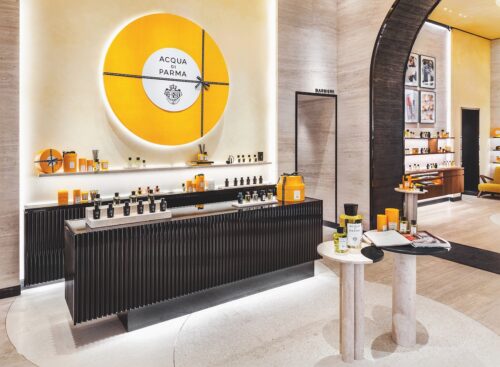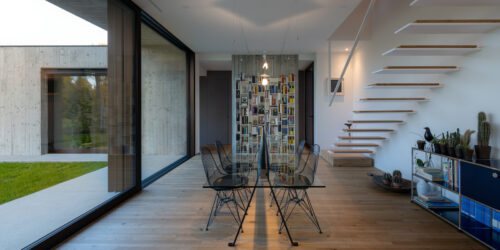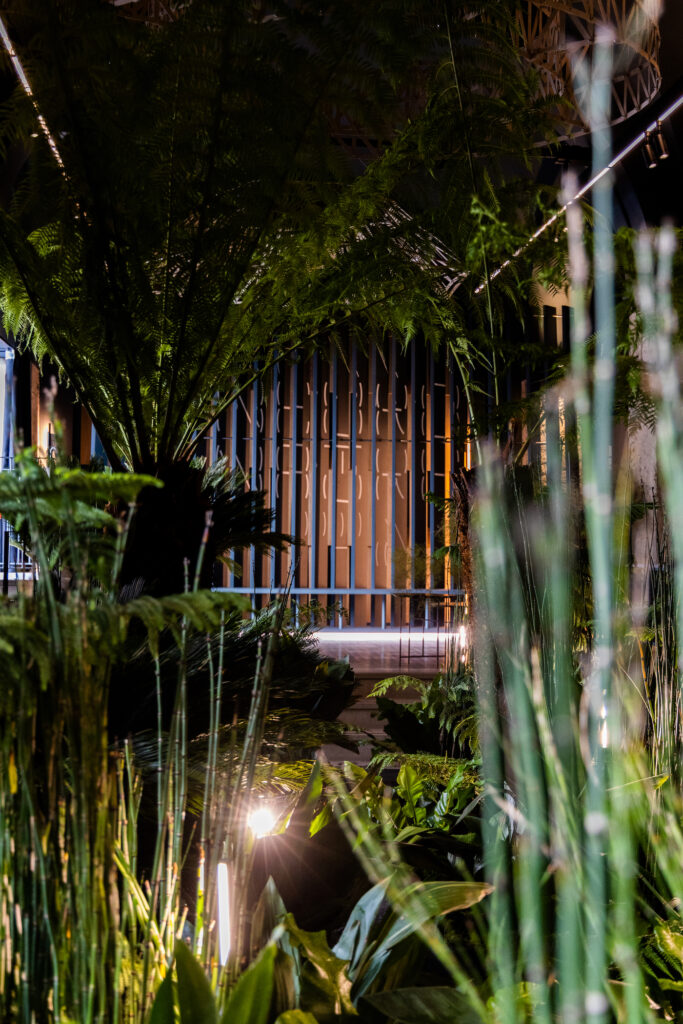
Experimental and multi-sensory journey: dont’ call it virtual reality!
During the Design Week – up to the present – the Listone Giordano Arena space has turned into an installation entirely dedicated to the relationship between man and nature.
The role of nature in relation to man, the effects of anthropocentrism on the environment we live in, and a progressive centrality of the non-human perspective in the design strategies that contemporary living and relational spaces are imagined and designed, ‘called’ us to devote our traditional desire for research and experimentation to an experiential project that could engage the visitors on an emotional and scientific level.
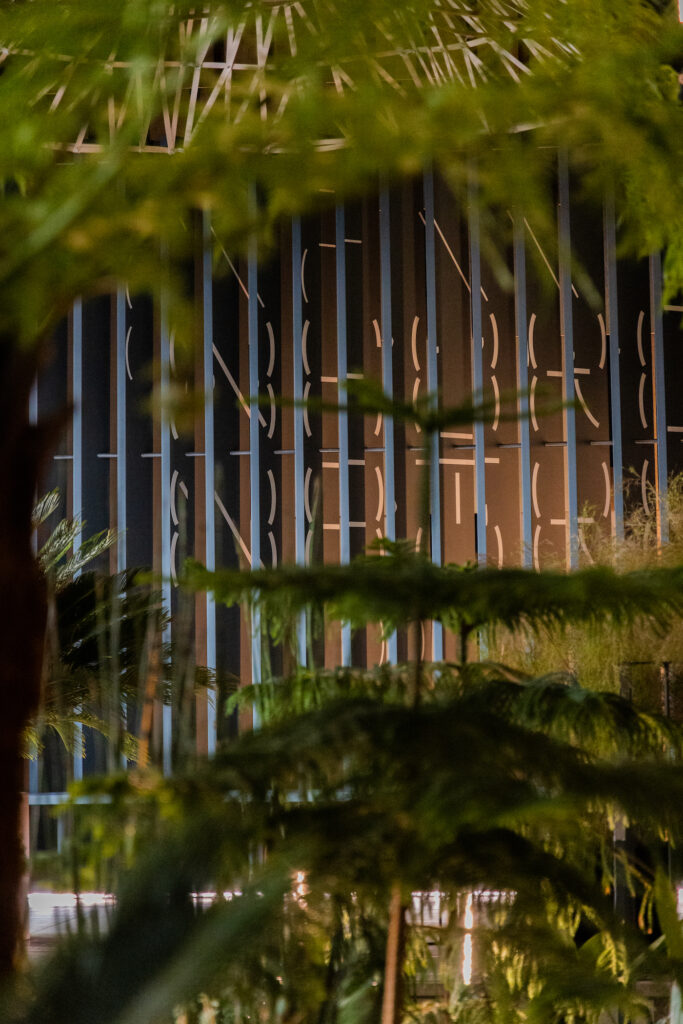
Neuro Nature is the first installation dedicated to exploring the neural reactions of a person in contact with nature.
The discipline of “restorative” design is the subject of growing interest, the subject of study and work not only of scientists and landscape architects, but increasingly the result of elaborations in the field of art, often in close interaction with studies on human biology.
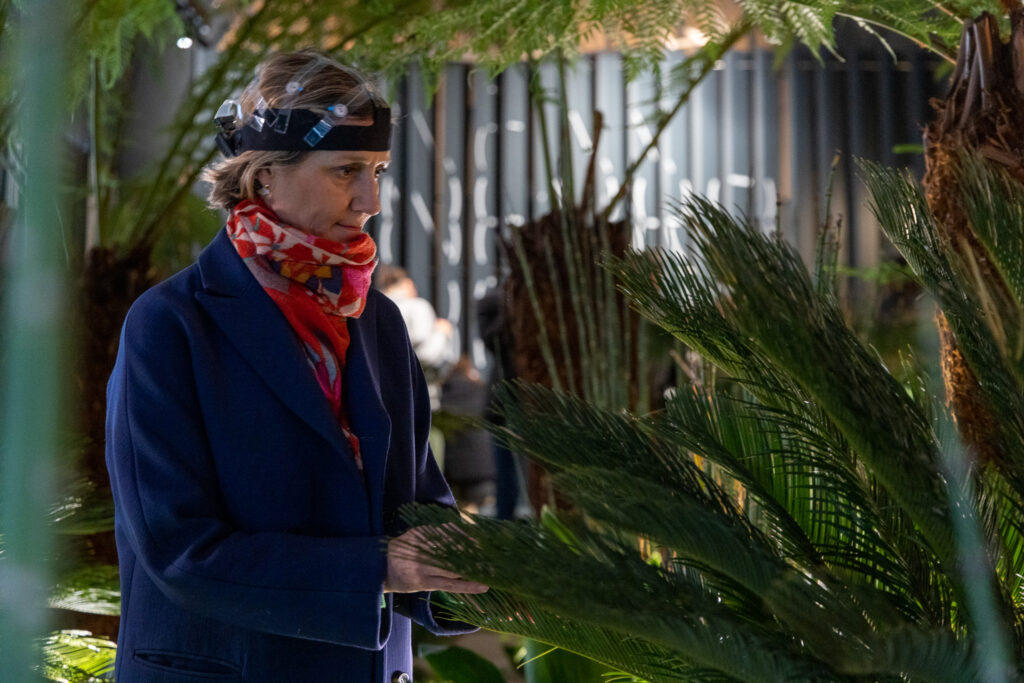
We now take for granted the relaxing effect of being in a forest, walking along a river, admiring the view of an unspoilt landscape, but we know a little less about the therapeutic psychological and empathic effects that can result from contact with a tree or a leaf.
READ ALSO – The hotel mood for this apartment in Tel Aviv is designed by Oshridana
Neuro Nature intends to go beyond the simple seduction of ‘green’ brought into our living spaces, the visit and the crossing of the main space in the Arena, entails wearing a neural helmet that allows to record the level of emotional involvement, the progressive sense of relaxation, to measure the cognitive balance of the visitors and to be able to give a visual representation at the end of the experience.
The aim is to take the orchestration of matter, light and nature to a new level in interior design, vegetation and primordial greenery no longer as pure aesthetics, but as a means of therapeutic relationship for the inhabitants. In the project of the space, the arrangement of plants thousands of years old, the role of light, measured and designed with a view to the greatest possible wellbeing, a large library of materials of everything present in the Arena but in their original form, surfaces that offer themselves to the touch to provoke an emotional reaction, all come together in the form of an ecosystem.
The site-specific installation
Listone Giordano Arena – an established cultural hub on the Milanese stage of design culture – hosts an indoor primary forest, offering visitors and enthusiasts a regenerating experience in direct contact with the plant kingdom.
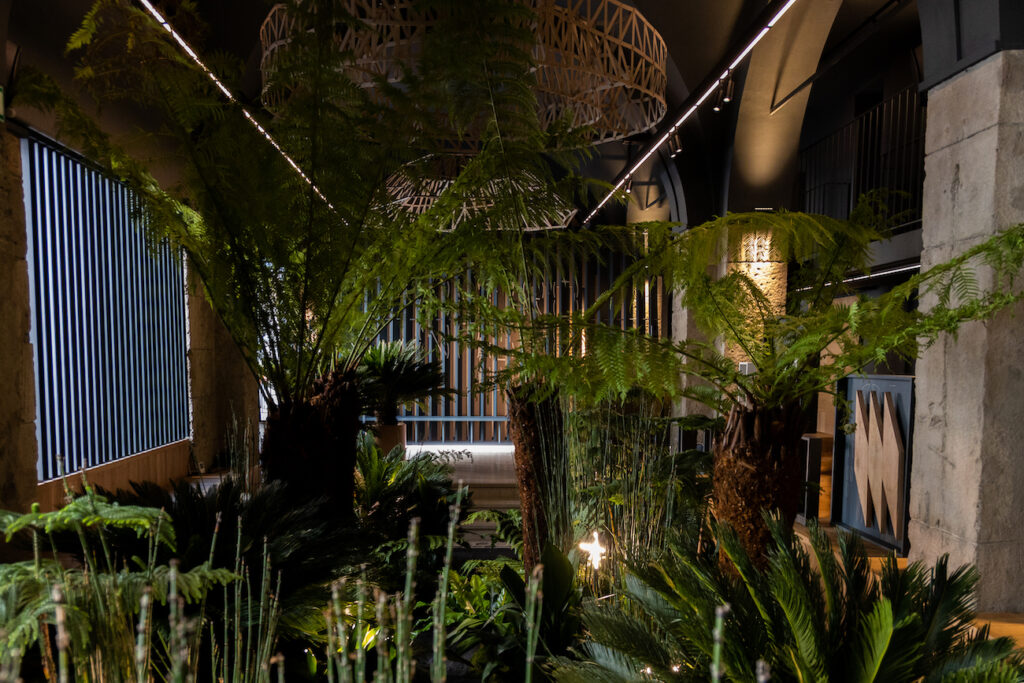
The basis of the design is that a visit of about 15 minutes inside the path designed and implemented by Paghera – an expert in the design of high-end greenery – can provide significant measurable benefits in physiological, cognitive and emotional terms.
The project stems from the necessary, and not simply implied, premise of that ‘promise of well-being’ dear to Listone Giordano and Arena’s partners, which can also be achieved through the use of natural materials – such as wood, stone as well as un intangible material like light – and an open dialogue with the fascinating world of plants.
The shared desire to help people ‘feel better’ is the founding choice of this Design Week, a radical vision that brings into reality those theories and studies inherent to Wilson’s biophilia and environmental regeneration. From these it is possible to draw indications of what characteristics of the built environment can facilitate recovery from stress and mental fatigue.
READ ALSO – Michele De Lucchi unveils his Earth Stations workplace in Milan
Thus, an embryo – evocative and symbolic – of a micro–primeval forest comes to life inside Arena, in which some of the most ancient plant organisms found refuge (explains Carlo Bonanno at Paghera’s landscape summit), such as multicellular algae, aquatic plants capable of photosynthesis at different depths. The first major steps in the evolution of land plants were the development of bryophytes and pteridophytes. Bryophytes are the simplest terrestrial plants, including mosses and liverworts, tiny plants that inhabit wet areas of undergrowth or near springs.
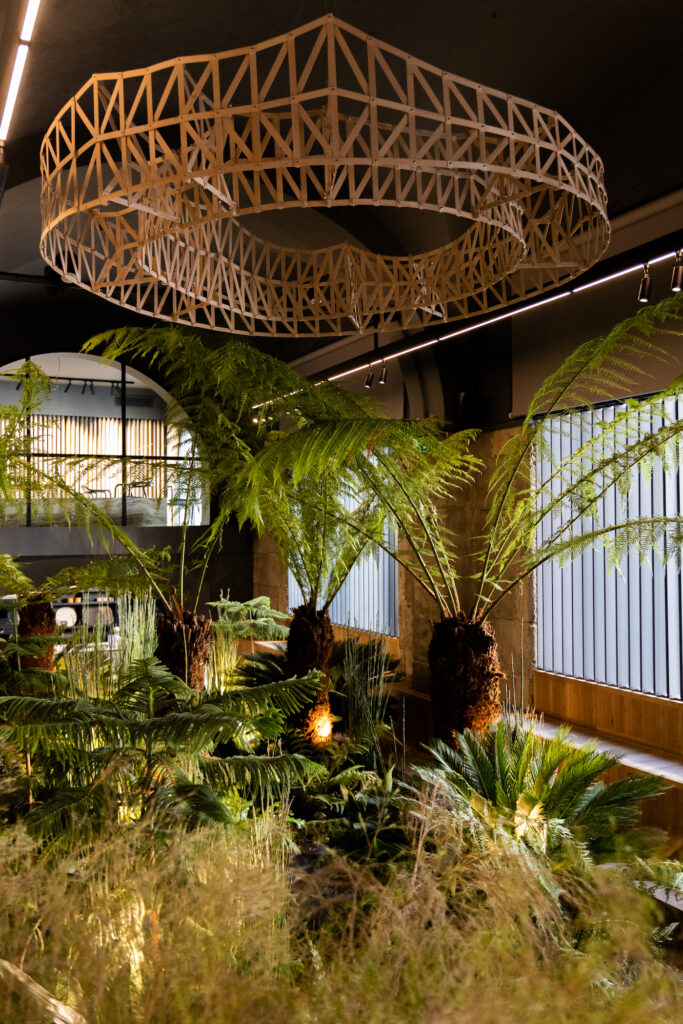
Mosses form soft cushions on the trunks of some trees or on rocks, in shady areas or along the course of rivers. Pteridophytes are small plants that have developed a number of adaptations to successfully occupy environments far from water. They are more complex than bryophytes because they have a system of conducting vessels; however, they are considered primitive because their embryo does not form a seed but spores. These include ferns, lycopods and horsetails.
The ‘barefoot’ route (for those who wish to do so) is facilitated and made even more inclusive by the use of technological ‘neuronal helmets’ made available by the Department of General Psychology of the University of Padua, a prestigious collaboration thanks to which it will be possible to virtually recreate the track produced during the regenerating experience that stimulates sight, hearing, touch and smell.
This oasis of regenerating wellbeing is part of serious reflection and research into environmental psychology, which aims to analyze the actual impact of the characteristics of the physical environment on individual and collective wellbeing. The approach is interdisciplinary and based on empirical evidence. Specifically through evidence-based design oriented towards biophilia, architecture can simultaneously promote the Well-being of People and the Planet.
THE BIO.POD experience
The BIO.POD is a calm and welcoming multisensory space designed by Giuliana Salmaso and Leonardo Tizi to offer users restorative breaks. The hypothesis guiding the design is that a few minutes rest in it can bring measurable benefits on a physiological, cognitive and emotional level.
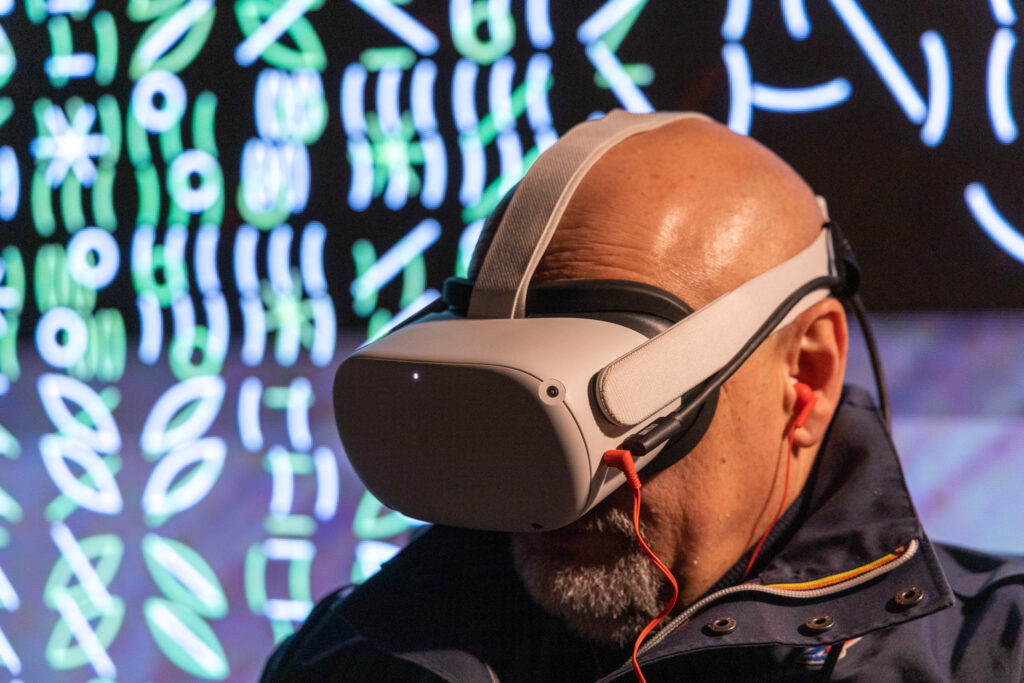
The project grows from the desire to help people to “feel good”. It offers architectural form to the theories of biophilia (Wilson, 1984) and environmental restoration (Kaplan, 1995, Ulrich, 1983), from which it is possible to draw insights on which characteristics of the built environment facilitate releif from stress and mental fatigue.
